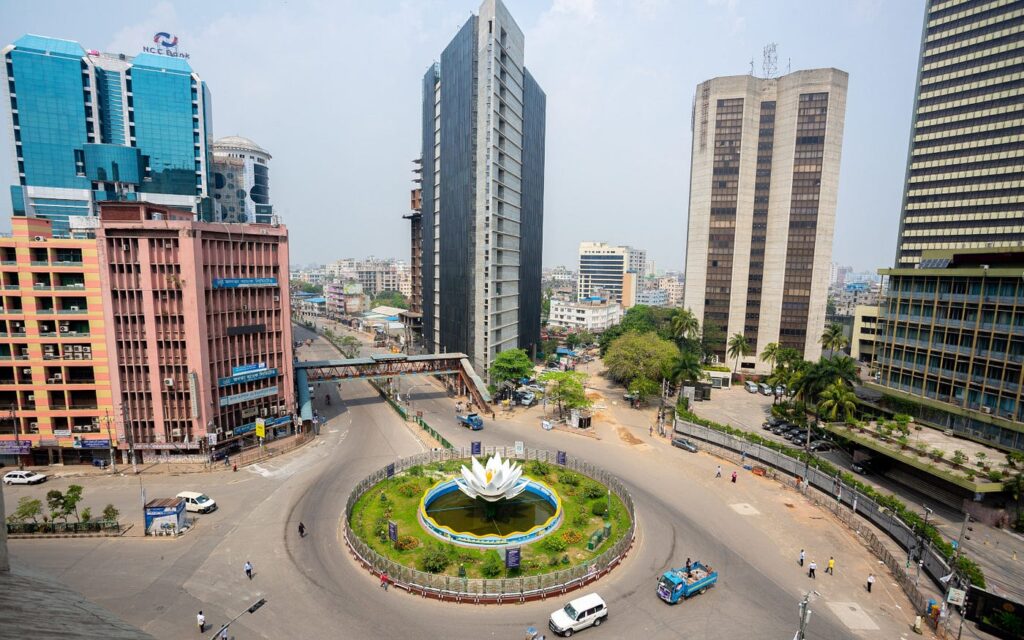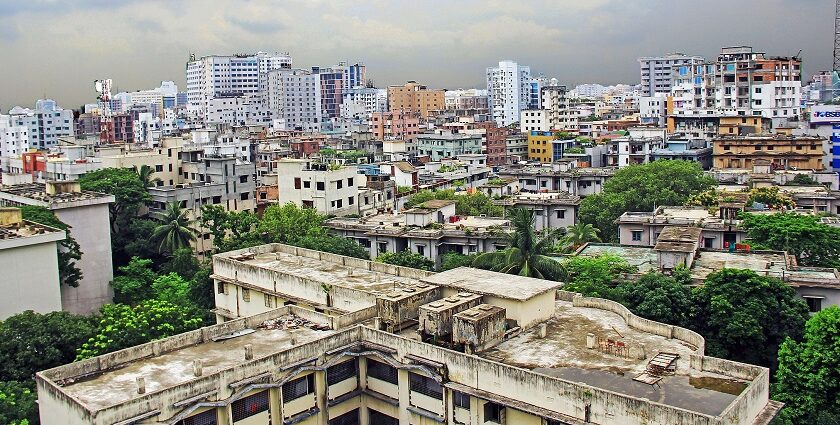Introduction

Dhaka, the capital of Bangladesh, is one of South Asia’s most dynamic and densely populated cities. With over 20 million residents in its metropolitan area, stands as a symbol of contrast — tradition and modernity, chaos and creativity, poverty and progress all coexist within its boundaries. From its historical significance during the Mughal era to its current status as a bustling megacity, ‘s journey has been fascinating, complex, and transformative.
Historical Background
The history of dates back over a thousand years. It gained prominence during the Mughal period in the early 17th century when it was made the capital of Bengal by Subahdar Islam Khan in 1608. The Mughals transformed into a major commercial center, especially for the muslin trade. The fine muslin produced in renowned worldwide for its delicate texture and quality.
After the fall of the Mughal Empire, ‘s importance declined during the British colonial era. However, the city began to regain its stature in the late 19th and early 20th centuries, especially with the development of railways and infrastructure. played a vital role in the political movements against British rule and later in the emergence of Bangladesh as an independent nation in 1971.
Geography and Climate
Located in central Bangladesh, Dhaka lies on the banks of the Buriganga River. The city is part of the Ganges Delta, one of the most fertile and low-lying regions in the world. Due to this geographical location, Dhaka is prone to flooding, especially during the monsoon season.
The climate in Dhaka is classified as tropical wet and dry. Summers are hot and humid, while winters are mild and relatively dry. Monsoon rains dominate the weather from June to September, often leading to waterlogging and traffic disruptions.
Population and Urban Growth
Dhaka is one of the fastest-growing cities in the world. Its population has surged due to rural-to-urban migration, driven by economic opportunities and better access to education and healthcare. The urban sprawl has expanded beyond the city core into surrounding districts, giving rise to new neighborhoods and satellite towns.
This rapid growth, however, has come at a cost. Overcrowding, unplanned urbanization, and inadequate infrastructure have led to challenges such as traffic congestion, pollution, housing shortages, and poor sanitation.
Culture and Heritage
Dhaka is a cultural melting pot, enriched by its history and diverse population. The city is known for its vibrant traditions, colorful festivals, and rich culinary heritage.
Language and Literature: Bengali is the primary language spoken in Dhaka. The city was at the heart of the Bengali Language Movement in 1952, a pivotal event in the country’s history. Dhaka remains a hub for writers, poets, and publishers. The annual Dhaka Lit Fest attracts global literary figures and showcases Bangladesh’s literary talents.
Festivals and Celebrations: Dhaka celebrates a variety of festivals with great enthusiasm, including Eid-ul-Fitr, Eid-ul-Adha, Durga Puja, and Pahela Baishakh (Bengali New Year). The streets of Dhaka come alive during these celebrations, reflecting the spirit and unity of its people.
Art and Music: Traditional art forms such as Nakshi Kantha embroidery, rickshaw art, and folk music thrive in Dhaka. The city is also home to numerous art galleries, museums, and performance venues, including the National Museum, Shilpakala Academy, and Bangladesh National Theatre.
Economic Significance
Dhaka is the economic engine of Bangladesh, contributing significantly to the country’s GDP. The city’s economy is diverse, encompassing manufacturing, trade, services, and technology.
Garment Industry: The Ready-Made Garment (RMG) sector is the cornerstone of ’s economy. The city hosts thousands of garment factories that export apparel to global markets. This industry provides employment to millions, particularly women, and has played a key role in reducing poverty.
Business and Finance: is also a major business and financial center. It houses the Bangladesh Bank, Stock Exchange, and headquarters of major local and international corporations. The city is witnessing a rise in tech startups and fintech services, fueled by a young and educated workforce.
Informal Economy: A large part of Dhaka’s economy is informal, including small shops, street vendors, and day laborers. This segment, though often overlooked, plays a vital role in sustaining the city’s livelihood.
Education and Institutions
Dhaka is the educational hub of Bangladesh, hosting some of the country’s most prestigious institutions. The University of , established in 1921, is the oldest and most esteemed university in the country. Other prominent institutions include Bangladesh University of Engineering and Technology (BUET), North South University, BRAC University, and several medical and technical colleges.
The city has a thriving academic environment, attracting students from across the nation. Despite challenges such as overcrowded campuses and funding constraints, continues to be a center for higher learning and research.
Infrastructure and Transportation
Dhaka’s infrastructure is under continuous development, although it struggles to keep pace with population growth.
Roads and Traffic: The city faces chronic traffic congestion due to narrow roads, unplanned intersections, and an overwhelming number of vehicles. Public transport options are limited, though efforts have been made to improve services through Bus Rapid Transit (BRT) and metro rail projects.
Metro Rail: The introduction of the Dhaka Metro Rail (MRT Line-6), partially operational as of 2024, marks a significant step toward improving urban mobility. More lines are planned, aiming to reduce commute times and alleviate traffic woes.
Utilities and Services: Despite improvements, challenges persist in water supply, electricity distribution, waste management, and drainage systems. Slum areas, in particular, face severe shortages in basic services.
Environmental Concerns
Dhaka grapples with severe environmental issues. Air pollution, largely from vehicular emissions and industrial waste, consistently ranks among the highest in the world. Water pollution in rivers like the Buriganga, largely due to untreated industrial effluents, is another major concern.
Unregulated urbanization has also led to the loss of wetlands and green spaces, contributing to ecological imbalance. Solid waste management remains inadequate, and climate change poses additional threats, such as flooding and heatwaves.

Social Dynamics and Lifestyle
Life in Dhaka is intense and fast-paced, yet deeply rooted in community values. Despite the challenges, residents of Dhaka display remarkable resilience and a strong sense of community.
Housing and Living Conditions: The housing situation in Dhaka varies widely. While affluent areas like Gulshan, Banani, and Dhanmondi offer modern apartments and amenities, large segments of the population live in slums or poorly constructed homes in overcrowded neighborhoods.
Healthcare: Dhaka has a mix of public and private healthcare facilities. While high-end private hospitals offer advanced treatment, public hospitals often remain overcrowded and under-resourced. The government is working to expand healthcare access and quality, especially through digital health initiatives.
Food and Cuisine: Dhaka is a food lover’s paradise. From street food like fuchka and kebabs to traditional dishes such as biryani, haleem, and pitha, the city offers a wide variety of flavors. Restaurants, cafes, and food delivery services have boomed in recent years, reflecting changing urban lifestyles.
Challenges and Future Prospects
Despite its vibrancy and economic importance, Dhaka faces significant challenges:
- Overpopulation and urban pressure
- Poor transportation infrastructure
- Environmental degradation
- Socioeconomic inequality
- Lack of urban planning
However, the future of Dhaka also holds promise. Major urban development initiatives are underway, including the Dhaka Detailed Area Plan (DAP), smart city projects, expansion of public transport, and digital governance.
Improving governance, decentralizing economic activities to reduce pressure on the capital, and promoting green technologies could help transform Dhaka into a more sustainable and livable city.
Conclusion
Dhaka is more than just the capital of Bangladesh — it is the beating heart of the nation. Rich in history, brimming with energy, and full of contradictions, Dhaka continues to evolve. It faces enormous challenges but also immense opportunities. If managed wisely, Dhaka has the potential to become a model megacity in the Global South — resilient, inclusive, and sustainable.
Would you like this in a downloadable format (PDF/Word), or should I help you format it into sections for a report or presentation?
4o
O
Rea